Highlights
- Benefits of vitamin D include support for bone, brain, cardiovascular, metabolic, pregnancy, and more.
- More than 1 in 3 Australians have a deficiency in Vitamin D.
- Vitamin D supplementation above 40,000 IU/day is shown to be safe, and reveals no signs of toxicity
Why Vitamin D?
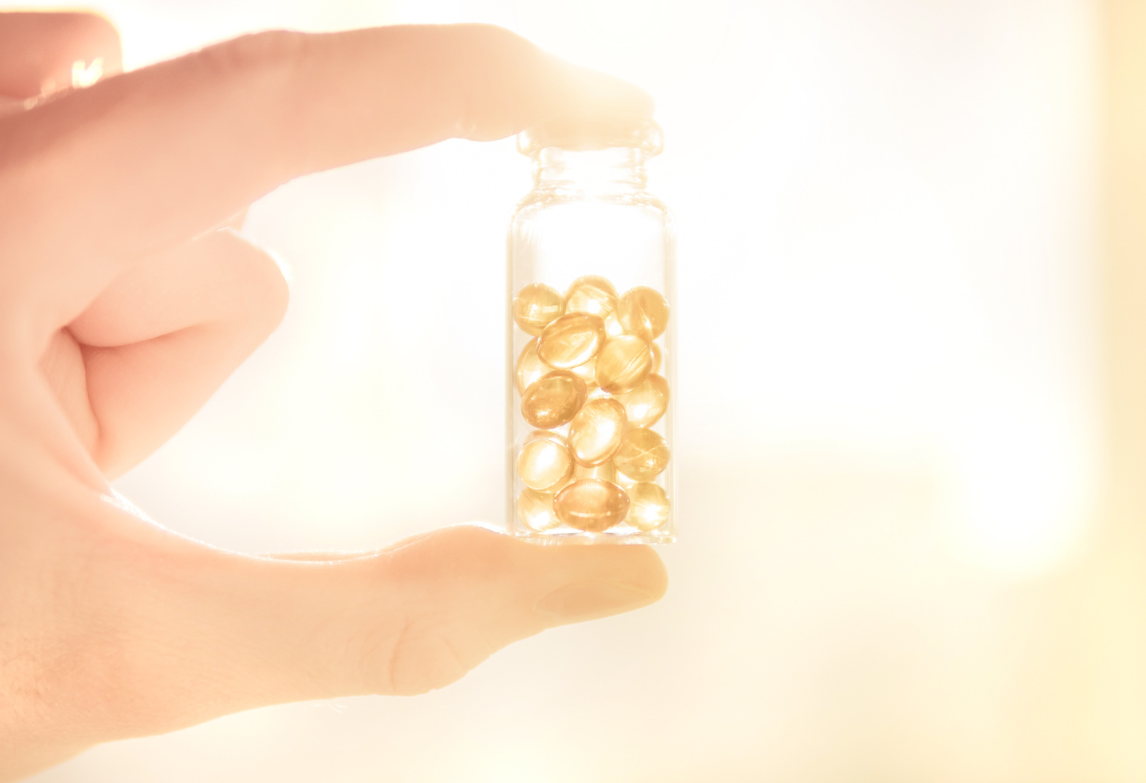
Vitamin D is a fat-soluble vitamin that performs an important role in calcium homeostasis and bone metabolism. Although vitamin D is called a “vitamin” (a required nutrient obtained from the diet), it acts more like a hormone since the body can synthesise it from cholesterol after the skin is exposed to UVB rays from the sun.1,2
Vitamin D is estimated to be involved in the regulation of up to 2000 genes; consequently, this vital nutrient has been linked to virtually every health condition under the sun, from bone and muscle health, to brain health, pregnancy, immune activity, cardiovascular functions and more.1,2,3,4
In contrast, vitamin D deficiency can lead to significant health consequences, and it’s estimated that more than 1 in 3 Australians are deficient in Vitamin D.1,5
The benefits of D3 and the impacts of deficiency
Vitamin D is known for helping balance minerals like calcium, phosphorus, sodium, and magnesium for healthy bone formation and mineralisation.6 Vitamin D can also act as an antioxidant, regulate immune activity, support cardiovascular health, modulate blood sugar balance, regulate neurotransmitter synthesis and more. 7
Vitamin D from food, supplementation, or sun exposure, is originally in an inactive form. It must shuttle first through the liver, to become 25(OH) vitamin D, and then to the kidney, to become biologically active 1,25(OH)2 vitamin D. Once biologically active, vitamin D travels to organs throughout the body (intestines, pancreas, kidney, lungs, thyroid, etc.) affecting cellular health and function.
Below are some of the organ systems that benefit from vitamin D, and the negative consequences of vitamin D deficiency in select health conditions.7
1) Vitamin D and musculoskeletal health
Vitamin D supports the normal structure and function of bones and muscles. Chronic vitamin D deficiency can lead to rickets, a skeletal disorder that results in weakening and distortion of bone growth in children without food sources of vitamin D and low sun exposure.3 Vitamin D deficiency also affects adults, as evidenced by an increased risk in certain types of fractures and forms of muscles weakness.3,8

2) Vitamin D and brain and nervous system
Vitamin D substantially affects the brain and nervous systems. Studies have shown that supplemental vitamin D may enhance mood during the winter season when vitamin D synthesis from the sun is extremely low.9,10 In addition, research suggests that low vitamin D levels may be associated with increased sleepiness and sleep difficulties.11,12
3) Vitamin D and pregnancy
Growing evidence also supports the benefits of vitamin D during pregnancy. Recent studies have found that during pregnancy, vitamin D may reduce the risk of many pregnancy complications.13–18 For more information about the role of vitamin D during pregnancy check out Omega-3’s DHA and Vitamin D: Why They’re So Important During Pregnancy.
4) Vitamin D and immunity and respiration
Since vitamin D plays a role in regulating the immune system, it may also have a positive influence on immune-related conditions, and may help to diminish their symptoms.3 For example, adequate amounts of vitamin D during childhood and adulthood have been shown to decrease the exacerbation of chronic respiratory issues and their symptoms.18,19
Studies have also shown that pregnant women taking 4,400 IU of vitamin D per day may reduce the risk of respiratory issues in their newborn to three-year-old children, compared to pregnant women who took just 400 IU per day.20 Self-reported incidences of seasonal respiratory complications have shown to be significantly lower in women taking 800 IU per day compared to placebo.21,22
5) Vitamin D and cardiovascular health
In addition to the respiratory system, research shows that vitamin D helps to reduce the risk of various complications of the heart and blood vessels.23,24 For example, researchers reported that daily vitamin D supplementation using a wide range of doses (i.e., 600 IU, 2,000 IU, 4,000 IU) decreased stiffness of specific blood vessels after only eight weeks, compared to placebo. Even more compelling, the influence of vitamin D was observed in a dose-response relationship, meaning that as more vitamin D was taken, more improvement in blood vessel structure was observed.25
6) Vitamin D and metabolism
Vitamin D is involved in numerous metabolic processes throughout the body, with research showing that vitamin D can positively influence blood sugar imbalances and metabolic complications.26–29 Obesity is a significant risk factor for many metabolic and cardiovascular imbalances. Research suggests that the prevalence of vitamin D deficiency may be higher among people with obesity (and to a lesser degree in people who are overweight) and those with blood-sugar imbalances.30 Importantly, the association between vitamin D and metabolic complications may be dose-dependent—the better one’s vitamin D status, the lower the risk of many of these imbalances.
Sources and forms of vitamin D
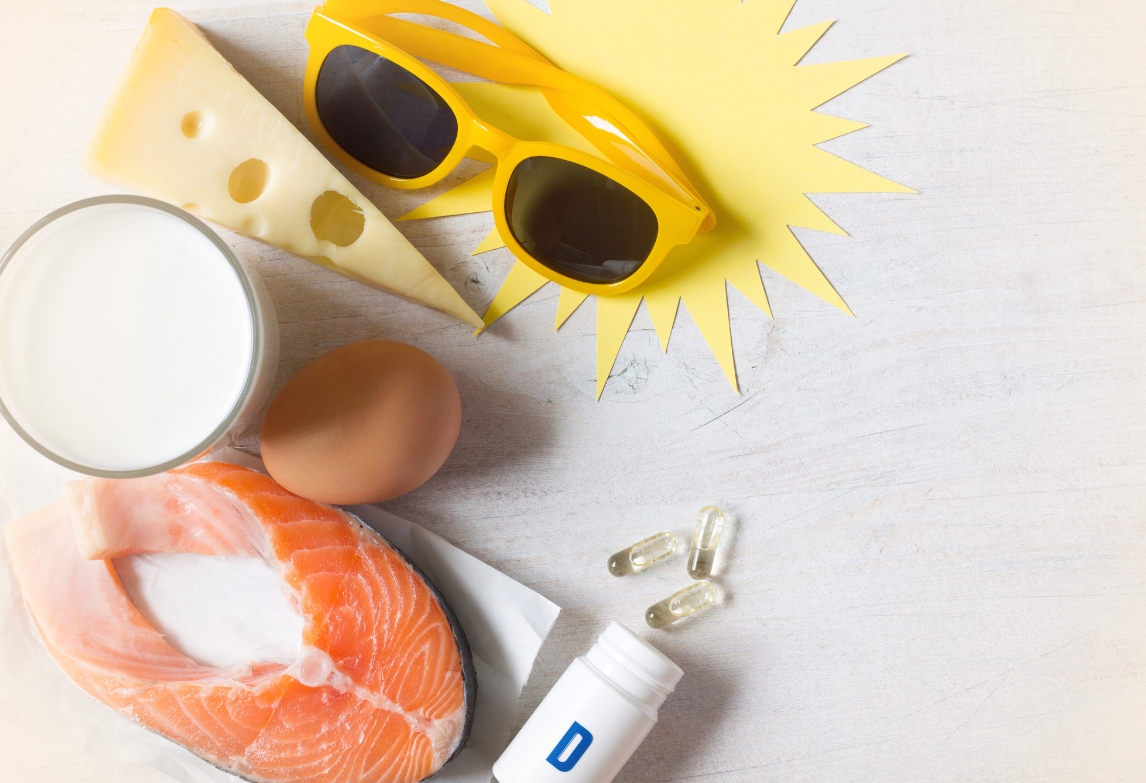
1) Vitamin D from sunlight
Sunlight can be a potent natural driver of vitamin D synthesis.
A 20-minute total body exposure to sunlight produces approximately 10,000–20,000 IU of vitamin D.2,3
Anything that reduces or interferes with UVB radiation from sunlight penetrating the skin affects the skin’s ability to make vitamin D. Many factors influence vitamin D production by the body, from geographical location to environmental conditions.
- Geographical location, time of year, time of day: Differences in sun exposure greatly depend on the angle at which sunlight reaches the earth, which changes based on where one lives, the time of year, and the time of day. Those living at higher latitudes, (above 30oN or 30oS) receive less UVB radiation than those living closer to the equator, and this limits how much vitamin D can be made by the skin.31 Vitamin D synthesis is lower during the winter season, and in early morning and late afternoon, when skin exposure to sunlight is minimal.5
- Skin pigmentation: Melanin is a pigment in the skin, hair, and eyes that acts as a natural sunscreen by absorbing UVB radiation.32 The more melanin in the skin, the less vitamin D will be produced. Dark skin is estimated to have a natural SPF of 15, effectively reducing vitamin D synthesis by up to 99%.33 It can take someone with darker skin 3-6 times longer to make the same amount of vitamin D as someone with a lighter skin tone.2
- Aging: The body’s ability to make vitamin D diminishes with age. For the body to make vitamin D, the presence of a compound called 7-dehydrocholesterol is needed when UVB rays from sunlight penetrate the skin. However, with increasing age, smaller amounts of this compound are produced. Consequently, even with the same amount of sun exposure, less vitamin D is produced. It’s estimated that the elderly can have up to a 75% reduction in their ability to make vitamin D due to lower levels of 7-dehydrocholesterol.5,34
- Sunscreen: Acting in similar fashion as melanin, sunscreen blocks the absorption of UVB radiation. As a result, when sunscreen is properly applied it can reduce how much vitamin D is made by the skin by up to 99%.32
- Other factors: Time indoors, cloudiness, fog, smog, and clothing all decrease the amount of UVB rays that reach the skin, and as a result, the amount of vitamin D that can be made.31
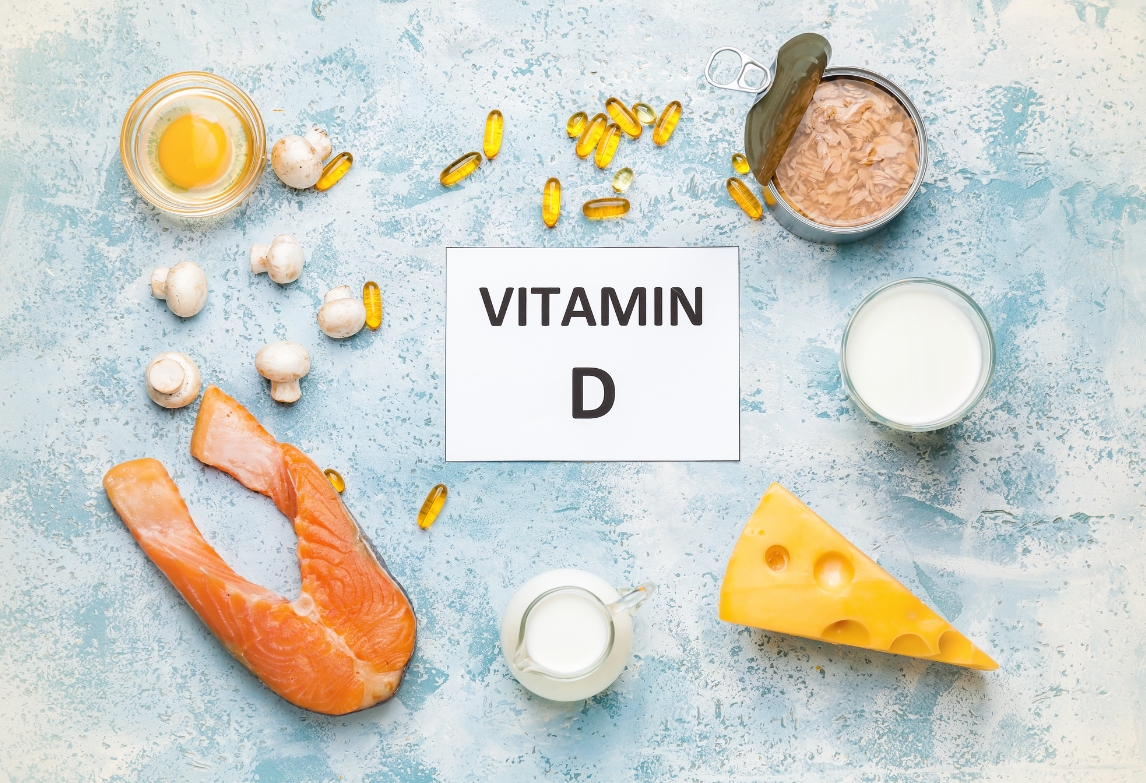
2) Dietary sources of vitamin D
Natural food sources of vitamin D3 (or cholecalciferol, a primarily animal-based form of vitamin D) include fatty fish, egg yolks, and cod liver oils. For vitamin D2 (or ergocalciferol, the plant-based source of vitamin D), shiitake mushrooms are an excellent source. Here is an estimate for the amounts of vitamin D3 (naturally occurring and fortified) and D2 that may be found in certain food sources.
NATURAL SOURCES
- Cod Liver Oil – 400-1000 IU vitamin D3 (per teaspoon)
- Egg Yolk – 20 IU vitamin D3 or D2 (per yolk)
- Mackerel (canned) – 250 IU vitamin D3 (per 3.5 oz)
- Salmon (canned) – 300-600 IU vitamin D3 (per 3.5 oz)
- Salmon (fresh farmed) – 100-250 IU vitamin D3 or D2 (per 3.5 oz)
- Sardines (canned) – 300 IU vitamin D3 (per 3.5 oz)
- Shiitake mushrooms (fresh) – 100 IU vitamin D2 (per 3.5 oz)
- Shiitake mushrooms (sun dried) – 1600 IU vitamin D2 (per 3.5 oz)
- Sunlight/UVB Radiation – 20,000 IU vitamin D3 (per 1 MED)**
- Tuna (canned) – 230 IU vitamin D3 (per 3.5 oz)
FORTIFIED FOODS
- Fortified breakfast cereals – 100 IU vitamin D3 (per serving)
- Fortified butter – 56 IU vitamin D3 (per 3.5 oz)
- Fortified cheeses – 100 IU vitamin D3 (per 3 oz)
- Fortified milk – 100 IU vitamin D3 (per 8 oz)
- Fortified orange juice – 100 IU vitamin D3 (per 8 oz)
- Fortified yogurts – 100 IU vitamin D3 (per 8 oz)
- Infant formulas – 100 IU vitamin D3 (per 8 oz)
SUPPLEMENTAL SOURCES
- Multivitamin – 400, 500, and 1000 IU vitamin D3 or D2
- Vitamin D3 – 400, 800, 1000, 2000, 5000 IU
3) Supplements: Which form of vitamin D is best?
Two forms of vitamin D are available for supplementation: D2 and D3. These two forms primarily differ in structure and sources. Although both forms are converted by the liver into calcitriol [25(OH) vitamin D], the same form of vitamin D measured in the blood to determine a person’s vitamin D status, strong evidence indicates that vitamin D3 is more effective at sustaining vitamin D blood levels over time than vitamin D2.35–38
Vegans and others who prefer a plant-based source of vitamin D typically choose to supplement with vitamin D2, compared to animal-based vitamin D3 sources. Fortunately, there is a plant-based vitamin D3 available in the form of lichen, a fungi and algae plant-like organism.
Multivitamins typically include either 400, 500, or 1000 IU vitamin D in the form of D2 or D3 or a combination of both. Vitamin D stand-alone supplements can be found in vitamin D3 form with values of 400–50,000 IU.3 Find out more about supplementing Vitamin D here.
Vitamin D dosage: How much is enough?
Dosage recommendations for vitamin D
General vitamin D supplementation guidelines have been proposed by various federal and research-based institutions.
Keep in mind, that 1 mcg of Vitamin D is 40 international Units (IU) (1 mcg = 40 IU).
Vitamin D Recommendations (Daily Allowance)
Infants
- 0 – 6 months – 400 – 1000 IU
- 6 – 12 months – 400 – 1000 IU
Children
- 1 – 3 years – 600 – 1000 IU
- 4 – 8 years – 600 – 1000 IU
Adults
- 9 – 18 years – 600 – 1000 IU
- 19 – 70 years – 1500 – 2000 IU
- 70+ years – 1500 – 2000 IU
Pregnancy
- 14 – 18 years – 600 – 1000 IU
- 19 – 50 years – 1500 – 2000 IU
Lactation*
- 14 – 18 years – 600 – 1000 IU
- 19 – 50 years – 1500 – 2000 IU
*4000–6000 IU/day is mother’s required intake if infant is not receiving 400 IU/day.
Below are some general guidelines for Vitamin D blood levels:
Most vitamin D researchers agree that vitamin D levels are sufficient at levels >30 ng/mL (or 75 nmol/L). Levels of 20 ng/mL or below (< 50 nmol/L) are considered indicative of vitamin D deficiency, while blood levels 21–29 ng/mL (or 51-74 nmol/L) may indicate insufficiency.39
Why testing for vitamin D is important
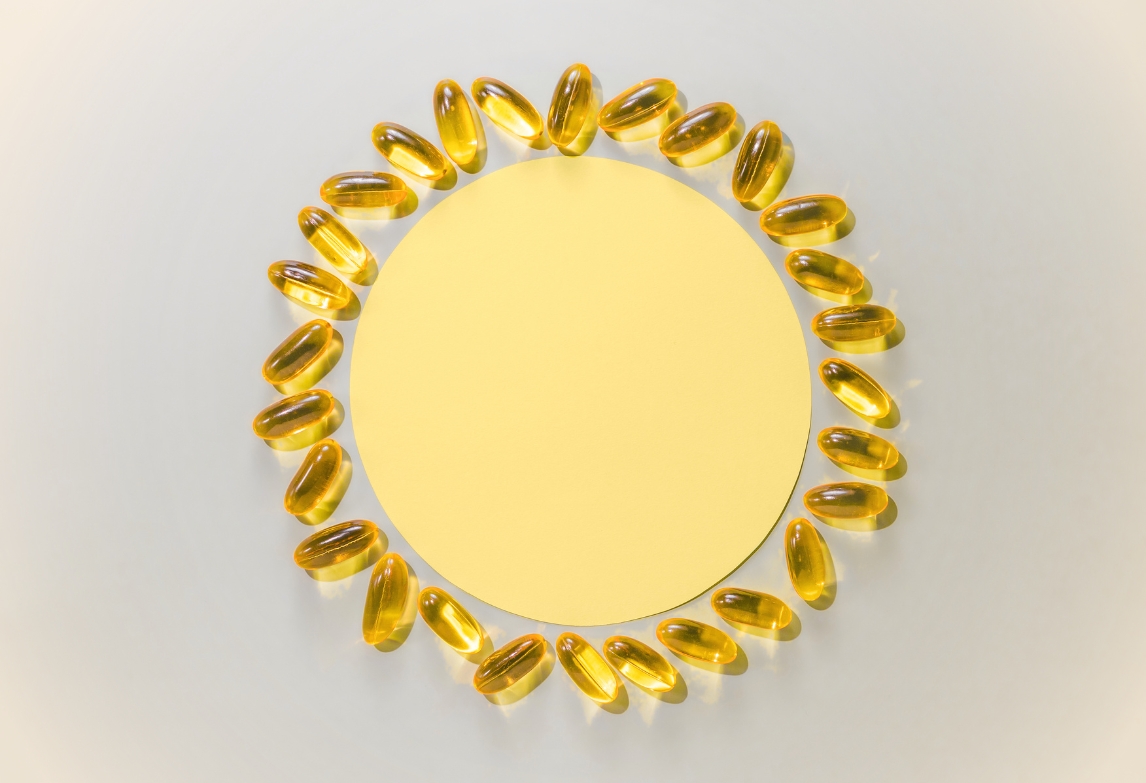
Numerous factors determine how vitamin D supplementation will affect an individual’s vitamin D blood levels, including baseline vitamin D levels, age, body weight, digestive health, diet, current medications, and more. Because the same dose of vitamin D in one person can result in different blood levels in another, measuring blood levels is the most efficient way to determine someone’s vitamin D status.
Blood levels of vitamin D, measured as calcitriol [25(OH) vitamin D], can be easily and accurately detected with a blood test requested by your doctor.
- The lower a person’s vitamin D blood levels prior to supplementation, the more vitamin D is required to achieve sufficient levels. Researchers reported that a 50% higher dose of vitamin D was needed to reach sufficient levels (>75 nmol/L or 30 ng/mL) in patients with lower baseline vitamin D levels, compared to patients with higher baseline levels.40
- With a higher body mass index (BMI), more vitamin D is needed to reach target blood levels. According to one study, after supplementing with 2000 IU of vitamin D per day, those with a higher BMI had significantly lower vitamin D levels than those with a lower BMI.41
- Other studies show that age also has an important influence on vitamin D levels after supplementation.42–44 Research suggests that as age increases, it may take more amounts of vitamin D to increase blood levels.42
How much vitamin D is too much?
While the proper care and precautions should be exercised when taking dietary supplements, research suggests that the risk of taking too much vitamin D3 is extremely rare. In fact, a growing body of research indicates that most people need to increase their daily vitamin D intake.1 Clinical Practice Guidelines indicate the following:3
- Infants (up to 1 year): up to 2,000 IU is safe
- Children and adolescents (1–18 years): up to 4,000 IU is safe
- Adults (> 18 years): up to 10,000 IU is safe
These levels are based on studies demonstrating that the use of these amounts within their respective age groups was safe, and no signs of vitamin D toxicity were reported.39 It’s also important to note that research shows the same safety profile for supplemental vitamin D3 doses beyond 40,000 IU/day!2
In closing
Despite its significance for overall health, research suggests that most people are not getting enough through sun exposure and diet. Testing, supplementation, appropriate sun exposure, and consuming dietary sources of vitamin D provide a balanced approach to achieving vitamin D sufficiency.
Gina Jaeger, PhD is a Developmental Specialist and Lead Research Writer for Nordic Naturals. She holds a doctorate in Human Development, and has published several research articles on children’s cognitive development. Gina enjoys studying and educating others on strategies for optimising health and wellness throughout the lifespan.
Glossary & References
Glossary
- Arachidonic acid cascade: More than twenty different signalling paths that derive from arachidonic acid, and influence the central nervous system, cellular growth, and the body’s response to inflammation.
- Competitive inhibition: Interruption of a chemical pathway owing to one chemical substance inhibiting the effect of another by competing with it for binding or bonding.
- Eicosanoids: Signaling molecules that derive from essential fatty acids, and are involved in modulating the intensity and duration of immune and inflammatory responses.
- Omega-6 to omega-3 ratio: Ratio of total omega-6s to total omega-3s.
- Phospholipids: A major component of all cell membranes; type of lipid molecule made up of two fatty acids, a phosphate, and a glycerol molecule.
- Polyunsaturated fatty acids (PUFAs): Fatty acids that contain more than one double bond in their backbone.
- Transepidermal water loss: When water passes from the dermis through the epidermis and evaporates from the skin’s surface; TEWL measurements are important for evaluating skin barrier functionality.
References
- Simopoulos AP. Biomed Pharmacother. 2002. 56(8): p. 365–79.
- Linus Pauling Institute. Essential Fatty Acids. Oregon State University.
- Fan Y-Y, Chapkin RS. J Nutr. 1998. 128(9): p. 1411-1414.
- Belch JJ, Hill A. Am J Clin Nutr. 2000. 71 (1 Suppl): 352S–6S.
- Guivernau M, et al. Prostaglandins Leukot Essent Fatty Acids. 1994. 51 (5): p. 311–6.Belch JJ, Hill A. Am J Clin Nutr. 2000. 71 (1 Suppl): 352S–6S.
- Palombo JD, et al. JPEN J Parenter Enteral Nutr. 1997. 21(3): p. 123-32.
- Barham JB, et al. J Nutr. 2000. 130(8): p. 1925-31.
- Viau S, et al. Graefes Arch Clin Exp Ophthalmol. 2009. 247(8): p. 1039-50.
- Arm J, et al. Lipids Health Dis. 2013. 12: p. 141.
- Lee TC, et al. Lipids Health Dis. 2014. 13: p. 196.
- Akdeniz M, et al. Br J Dermatol. 2018. 79(5): p. 1049-1055.
- Muggli, R. Int J Cosmet Sci. 2005. 27(4): p. 243-9.
- De Spirt S, et al. Br J Nutr. 2009. 101(3): p. 440-5.
- Brosche T, Platt D. Arch Gerontol Geriatr. 2000. 30(2): p. 139-50.
- Kawamura A, et al. J Oleo Sci, 2011. 60(12): p. 597-607.
- Jung JY, et al. Acta Derm Venereol. 2014. 94(5): p. 521-5.
- Bolton-Smith C, et al. Eur J Clin Nutr. 1997. 51: p. 619–624.
- Mills DE, et al. Proc Soc Exp Biol Med. 1994. 205(1): p. 56-61.
- Raz R, et al. J Child Adol Psychopharmacol. 2009.19(2): p. 167-77.
Related Posts
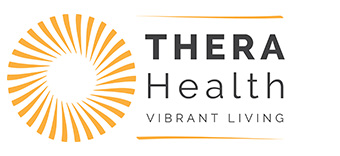






Leave a Reply
Want to join the discussion?Feel free to contribute!